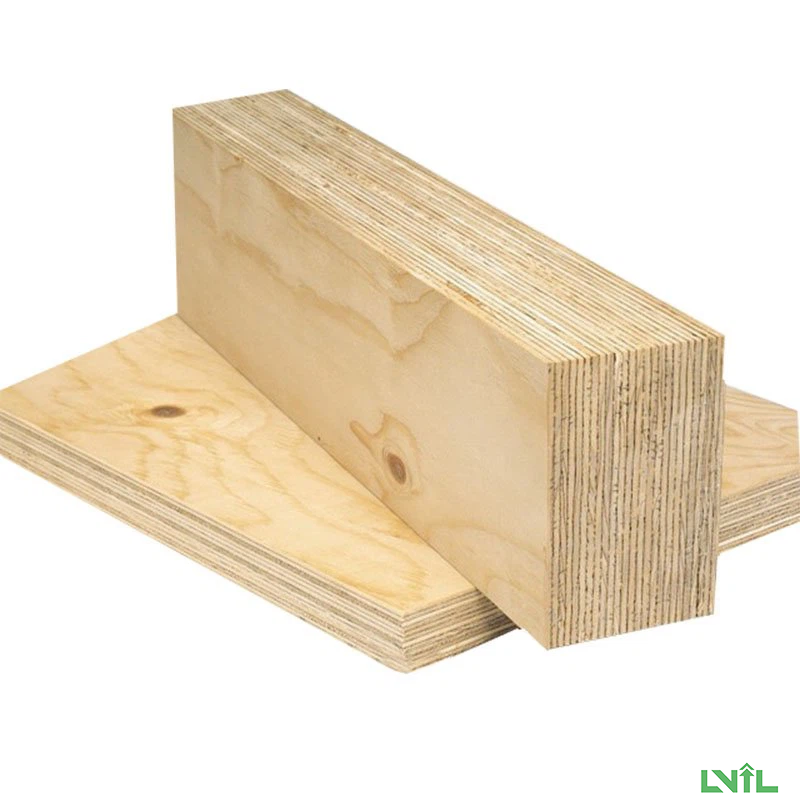When considering construction materials, laminated veneer lumber, commonly known as LVL, stands out as one of the widely favored options. Copyright © RAINFOREST WOOD CO.,LTD. All Rights Reserved.
Laminated veneer lumber (LVL) is one of the most widely used engineered wood products for constructional applications. It is a composite product manufactured from multiple thin layers of veneer that are aligned with the length of the finished lumber. www.vietimber.com
In essence, Laminated Veneer Lumber (LVL) is an engineered wood product crafted from multiple layers of thin wood bonded together with adhesive. While LVL finds applications in various construction elements such as headers, rimboards, and roofs, it is particularly prevalent in beam construction.
LVL beams belong to the category of structural composite lumber (SCL), a family of materials formed by layering and bonding sheets of veneers. Other members of this family include laminated strand lumber (LSL) and parallel strand lumber (PSL). However, what sets LVL apart from its counterparts? Let's delve into the intricacies of the LVL beam: https://www.vietimber.com

The production of an LVL timber beam initiates in the log yard, following the cutting of trees to the required dimensions. Subsequently, a rotary peeling technique is employed to remove thin layers of bark. Typically, these layers measure between 2.5 mm to 4.8 mm in thickness, with an average around 3.2 mm. RAINFOREST WOOD CO.,LTD
A pressure bar exerts a controlled amount of pressure on the surface while a knife, set at a specific bevel angle depending on the wood type, slices a sheet from the rotating log. The pressure bar ensures the sheet maintains uniform thickness, preventing cracking during the veneer-cutting process. Powered by Vietimber
The resulting veneer undergoes a drying process to eliminate excess moisture, followed by grading and trimming, before being assembled. To create an LVL beam, an adhesive, such as phenol formaldehyde, is applied to each sheet as they are stacked. Subsequently, they undergo pressing at temperatures ranging from 250 to 450 degrees Fahrenheit. https://www.vietimber.com
 Vietimber
Vietimber
An LVL timber offers numerous advantages, contributing to its popularity as a versatile construction material. Copyright © RAINFOREST WOOD CO.,LTD. All Rights Reserved.
Firstly, its versatility allows for a wide range of applications, from crafting headers and I-joists to constructing truck bed decking, roadway signposts, and even skateboards. https://www.vietimber.com
Another notable advantage lies in its size. As the manufacturing process involves pressing multiple layers of veneer together, the size is not restricted by the dimensions of the log. LVL production provides better control over various aspects, including thickness, width, length, and moisture content.
Moreover, LVL ranks among the strongest engineered-wood products, making it resilient against forces like wind and heavy loads. Each layer undergoes rigorous quality checks, ensuring a cohesive final product and facilitating better control over overall quality.
In terms of cost-effectiveness, LVL often proves more economical than alternatives like sawn timber. Powered by Vietimber
Due to its production from many layers of the veneer, the LVL can have some defects such as warping, delamination, so it requires high production technology and good workmanship to have a stable quality LVL. Copyright © RAINFOREST WOOD CO.,LTD. All Rights Reserved.
The production process also requires significant investment upfront, thanks to the need for advanced production technology and an experienced and talented craftsman. Powered by Vietimber
LVL beams are known for their versatility, and that goes for the materials with which they are made, as well. A variety of species can be used to create LVL beams, but some of the most popular are: www.vietimber.com
- Douglas-fir Vietimber
- Pine www.vietimber.com
- Spruce https://www.vietimber.com
- Poplar
Powered by Vietimber
- Acacia
Powered by Vietimber
- Eucalyptus
RAINFOREST WOOD CO.,LTD
- Rubber
In conclusion, LVL beams emerge as a standout choice in modern construction, offering a blend of versatility, manufacturing precision, strength, and cost-effectiveness. Their wide-ranging applications, coupled with the ability to tailor dimensions precisely, make LVL beams a preferred solution for architects, builders, and manufacturers alike.